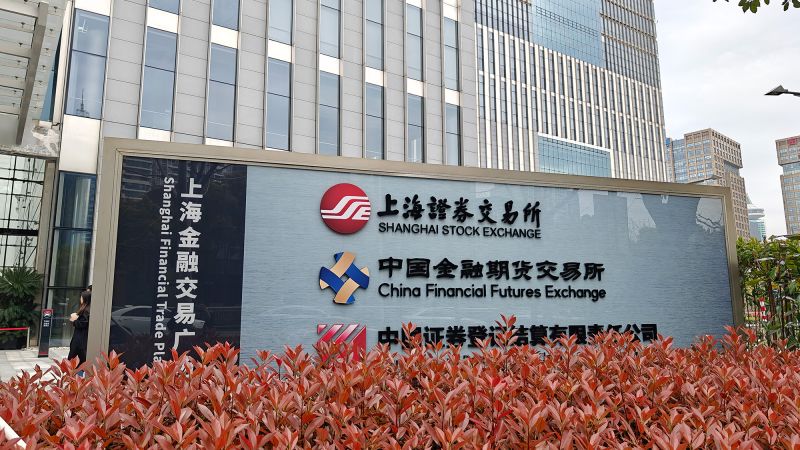Editor’s Note: Sign up for CNN’s Meanwhile in China newsletter, which explores what you need to know about the country’s rise and how it impacts the world.
Chinese stocks staged their biggest rally in years Tuesday, after the country’s sovereign wealth fund said it would step up buying shares as officials scramble to draw a line under a three-year market rout.
The Shanghai Composite, mainland China’s benchmark index for large state-owned companies and blue-chip stocks, ended up 3.2% on Tuesday, ending a six-day losing streak. It marks the biggest daily increase since March 2022.
Smaller companies did even better. The Shenzhen Component Index rose 6.2%. It was the index’s best daily gain since September 2015, while startup index ChiNext had its best performance in seven years, soaring 6.7%.
In Hong Kong, the Hang Seng Index surged 4%, the biggest percentage gain in more than six months. Chinese tech shares led the way. Alibaba Group (BABA), which is due to announce earnings on Wednesday, was up 7.6%.
The positive mood spilled over to Europe, where the region’s benchmark Stoxx 600 index opened about 0.5% higher, before trimming those early gains to stand 0.1% up by 5.44 a.m. ET. US stock futures were mixed.
The rebound in Chinese stocks came after Beijing stepped up its efforts to prop up the ailing stock market, which had a dire 2023 and has been the worst performer in the world so far this year.
By Monday, about $6.1 trillion in market value had been wiped from the Chinese and Hong Kong stock markets since their recent peaks in February 2021.
Central Huijin Investment, the equity arm of state-owned China Investment Corp, announced Tuesday that it had recently expanded its holdings of exchange-traded funds (ETFs) on mainland stock markets.
“We will continue to increase our holdings and expand our holdings to resolutely maintain the stable operations of the capital market,” it said in a statement.
Shortly after the announcement, the China Securities Regulatory Commission issued a statement saying it “firmly supports” Central Huijin Investment in its plan to continue to increase the scale of its holdings.
The regulator said it would also encourage more institutional investors, such as mutual funds, state pension funds and insurers, to enter the stock market, the CSRC added.
The intensified efforts came after Chinese markets resumed their slide on Monday, when more than 1,800 stocks fell by more than 10% in Shanghai and Shenzhen.
Angry investors flocked to a social media account of the US Embassy in Beijing to vent their outrage about the meltdown of the stock market, after other outlets of protest had been closed off.
Tuesday’s rally in China was in contrast to other markets in the region. Japan’s Nikkei and South Korea’s Kospi closed down 0.5% and 0.6% respectively. Australia’s S&P/ASX 200 also lost 0.6%.
The redoubled attempts to rescue Chinese stocks appear to have bought Beijing some more time, but they don’t address the underlying challenges the economy faces — weak demand, deflationary pressures, a crashed real estate sector, and rising trade tensions with the United States.
A brief period of market calm following soothing words from Beijing was brought to an abrupt end late last month when a Hong Kong court ordered Evergrande, the poster child of China’s property crisis, to liquidate. That sent investors running for the exits again.
Anna Cooban contributed to this article.
Read the full article here
